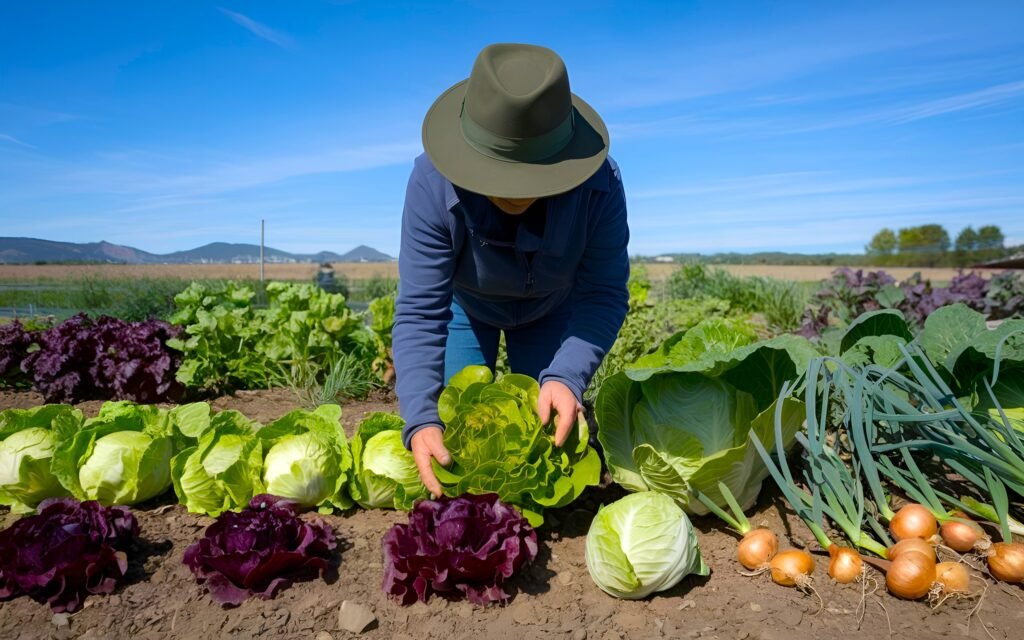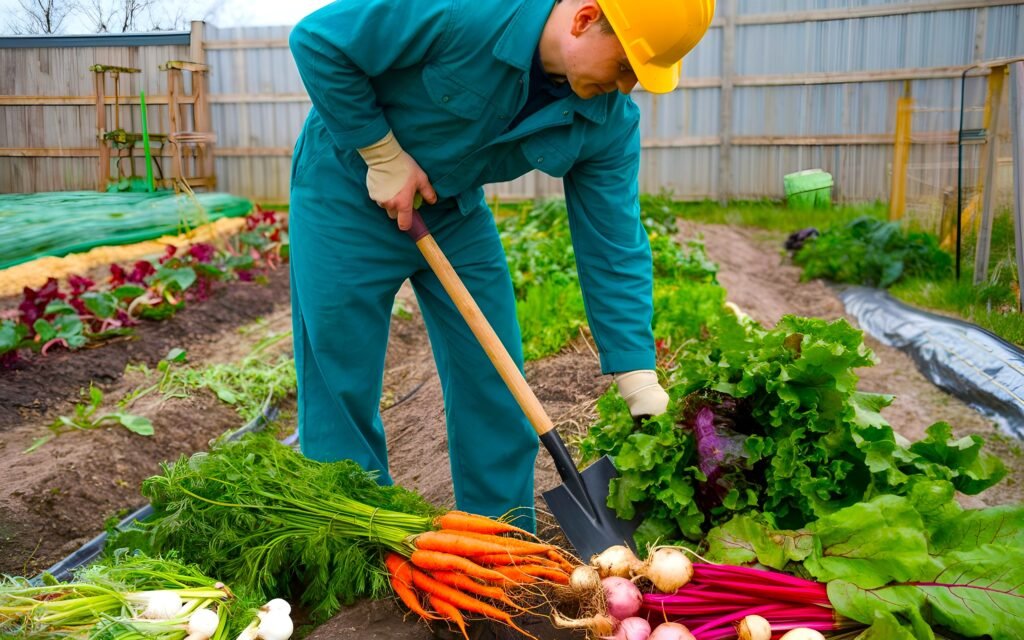Introduction
Gardening in cold weather is often overlooked, but it offers an opportunity to enjoy fresh produce year-round. By growing cold-hardy vegetables, you can bring in nutritious, homegrown vegetables even as temperatures start to dip. Not only do these crops thrive in the cold, but they also enhance the flavor and variety of your winter meals.
Understanding Cold-Hardy Vegetables
What Are Cold-Hardy Vegetables?
Cold-hardy vegetables are plants that can withstand frost and freezing temperatures, typically down to around 20°F (-6°C) or even lower. These plants have evolved to thrive in cooler conditions, making them ideal for winter or early-spring harvests.
How Do They Survive Low Temperatures?
Cold-hardy vegetables have unique adaptations, such as producing sugars that act as a natural antifreeze. This helps them avoid cell damage in freezing weather. Many of these plants can tolerate repeated frost, maintaining their quality and flavor.
Benefits of Growing Cold-Hardy Vegetables
Fresh Produce in Winter
Growing your own winter vegetables means you’ll always have access to fresh, nutritious ingredients, no matter the season. Nothing beats the satisfaction of picking fresh kale or carrots from your garden on a chilly day!
Nutritional Benefits
Cold-hardy vegetables are packed with vitamins, minerals, and antioxidants, which are especially valuable during the winter months. Greens like kale and spinach offer high levels of vitamins A, C, and K, while root vegetables like carrots are rich in beta-carotene.

Factors to Consider When Choosing Cold-Hardy Vegetables
Climate and Frost Dates
Before choosing which cold-hardy vegetables to grow, it’s important to know your region’s climate and average frost dates. This will guide you in selecting crops suited to your area and determine when to plant them for optimal growth.
Soil Type and Sunlight
Winter vegetables often need nutrient-rich soil and consistent sunlight, even though the days are shorter. Prepare your soil with compost, and place your garden in an area that receives as much sunlight as possible.
Top Winter Vegetables for Your Garden
1. Kale
Kale thrives in cold weather, becoming even sweeter after a frost. It can withstand temperatures as low as 10°F (-12°C), is very nutrient-dense, and is simple to grow.
2. Carrots
Carrots are another great choice. They actually become sweeter as temperatures drop, making winter carrots a flavorful treat. Loose soil that drains easily is ideal for their growth.
3. Spinach
Spinach is a leafy green that handles cold well and provides a steady source of vitamins. It can survive temperatures as low as 20°F (-6°C) and grows quickly.
4. Brussels Sprouts
Brussels sprouts thrive in cold climates and are hardy plants. Frost enhances their flavor, and they can survive temperatures down to 15°F (-9°C).
5. Garlic
Garlic needs a cold period to grow effectively, which makes fall the perfect time to plant it. It’s low-maintenance and will be ready for harvest in the spring or early summer.
6. Onions
Onions grow slowly over the winter and can withstand frost. They’re a versatile vegetable that adds flavor to countless dishes.
7. Broccoli
Broccoli is a great source of vitamins C and K and may be grown in colder climates. Cool temperatures, usually between 40°F and 70°F (4°C and 21°C), are ideal for this vegetable’s growth.
8. Parsnips
Parsnips are frost-resistant and grow even sweeter as the temperature drops. They need a longer growing period, so planting in late summer or early fall is ideal.
9. Radishes
Radishes are fast-growing, cold-tolerant, and ideal for beginners. They mature in as little as 4 weeks, making them a quick winter crop.
10. Cabbage
Cabbage is known for its resilience to cold. It’s a hardy vegetable that can withstand frost and provide a significant yield even in winter.
How to Prepare Your Garden for Winter
Mulching Techniques
A layer of mulch can insulate the soil, keeping it from freezing and providing extra protection for plant roots. Apply straw or shredded leaves around your plants to help regulate soil temperature.
Raised Beds and Containers
Raised beds can help with drainage and keep soil warmer, making them perfect for winter gardening. Containers are another excellent choice if you want to bring plants indoors during extremely cold weather.

Planting and Growing Tips for Cold-Hardy Vegetables
Knowing the right time to plant is essential. Many cold-hardy vegetables should be planted in late summer or early fall, allowing them to establish before temperatures plummet. Be mindful of spacing, as overcrowding can reduce airflow and increase the risk of disease.

Protecting Your Cold-Hardy Vegetables from Extreme Cold
Row Covers and Cold Frames
Row covers and cold frames offer a simple way to shield plants from the worst of winter weather. These barriers trap warmth and keep frost off the leaves, giving your vegetables a fighting chance during colder spells.
Windbreaks
Setting up windbreaks can prevent cold winds from damaging your plants. Hedges, fences, or even straw bales can act as windbreaks, offering extra insulation.
Harvesting Cold-Hardy Vegetables
Knowing when to harvest is key to enjoying the freshest produce. Many winter vegetables can stay in the ground for extended periods, so you can pick them as needed. Store harvested vegetables in a cool, dry place to extend their freshness.
Know about the Top 10 Hardy Succulents for Cold Climates to Grow Outdoors…>>
Conclusion
Growing cold-hardy vegetables is a rewarding way to keep your garden thriving year-round. With the right plants and a bit of preparation, you can enjoy fresh, nutritious vegetables even in the heart of winter. Whether you’re an experienced gardener or just starting, consider adding these resilient crops to your garden for a steady winter harvest.
Frequently Asked Questions (FAQs)
1. What is the best way to protect cold-hardy vegetables?
Use row covers, mulching, and windbreaks to protect your vegetables from extreme cold and frost.
2. Can I grow cold-hardy vegetables in containers?
Yes, many cold-hardy vegetables grow well in containers, especially if you can bring them indoors or place them in a sheltered area during freezing temperatures.
3. How do I know when my vegetables are ready to harvest?
Most cold-hardy vegetables mature slower in winter, so check the recommended harvest dates and look for visual cues like size and color.



